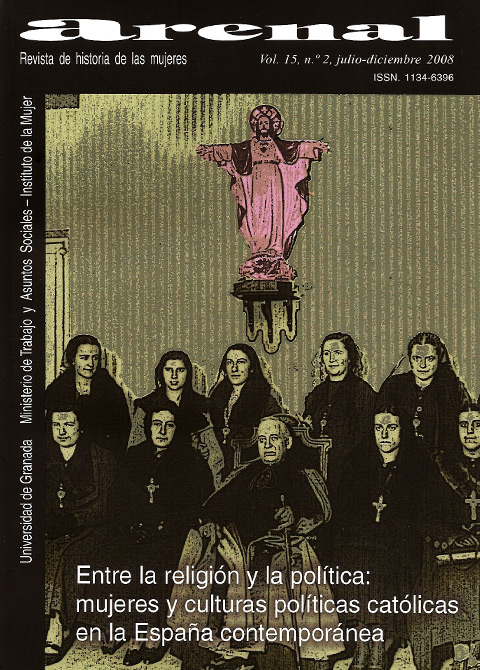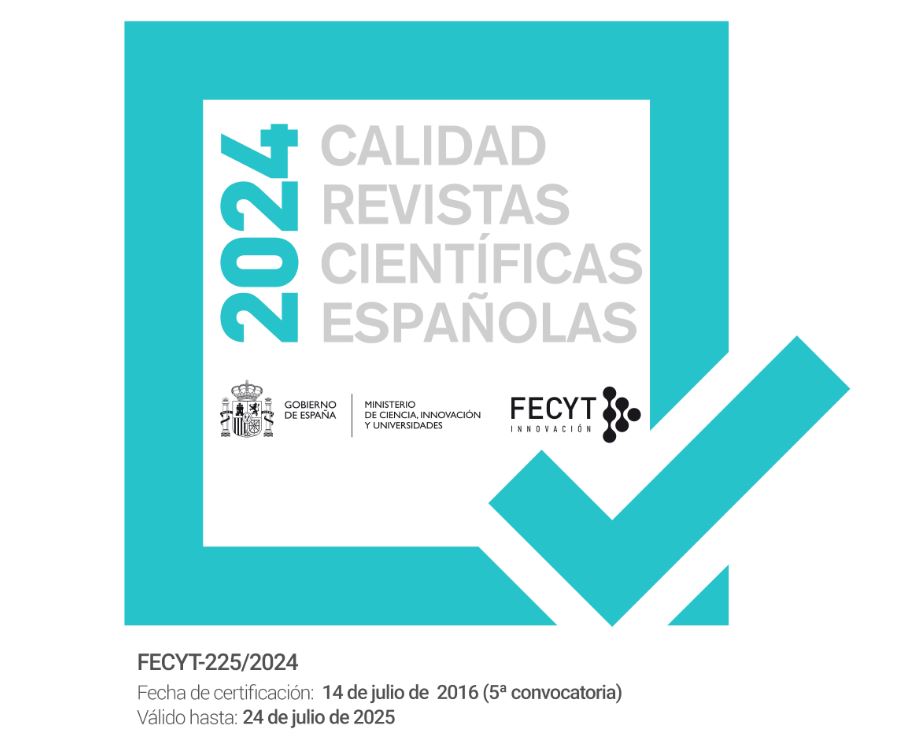De la creación de la Sección Femenina (1934) a la campaña electoral de 1936: Modalidades de intervención de las mujeres falangistas en la esfera pública
DOI:
https://doi.org/10.30827/arenal.v15i2.3036Palabras clave:
Falange, Sección Femenina, Esfera pública, Rosario Pereda, Campaña electoral, 1934-1936Resumen
La creación de la Sección Femenina, aunque significa de facto que los falangistas aceptan cierta presencia de “sus” mujeres en la esfera pública, remite a la defensa de un modelo femenino anclado en el espacio privado. Sus actividades, concebidas como una extensión del papel doméstico de la mujer al ámbito público, son pues esencialmente sociales. En 1936, con la campaña electoral, parecen ampliarse a lo político.
Este trabajo se interroga sobre el sentido y la realidad de esta aparente evolución así como sobre las contradicciones de la Sección Femenina, su dificultad en posicionarse entre la esfera pública y la privada. Estas contradicciones se hacen patentes en la figura de Rosario Pereda, jefe de la Sección Femenina de Valladolid y oradora reconocida y apreciada por sus camaradas masculinos.
Descargas
Descargas
Publicado
Cómo citar
Número
Sección
Licencia
Los/as autores/as que publican en esta revista están de acuerdo con los siguientes términos:
Los autores/as conservarán sus derechos de autor y garantizarán a la revista el derecho de primera publicación de su obra, el cuál estará simultáneamente sujeto a la Licencia de reconocimiento de Creative Commons 4.0 BY-NC-ND que permite a terceros compartir la obra siempre que se indique su autor y su primera publicación esta revista.
Los autores/as podrán adoptar otros acuerdos de licencia no exclusiva de distribución de la versión de la obra publicada (p. ej.: depositarla en un archivo telemático institucional o publicarla en un volumen monográfico) siempre que se indique la publicación inicial en esta revista.
Se permite y recomienda a los autores/as difundir su obra a través de Internet (p. ej.: en archivos telemáticos institucionales o en su página web) antes y durante el proceso de envío, lo cual puede producir intercambios interesantes y aumentar las citas de la obra publicada. (Véase El efecto del acceso abierto).














